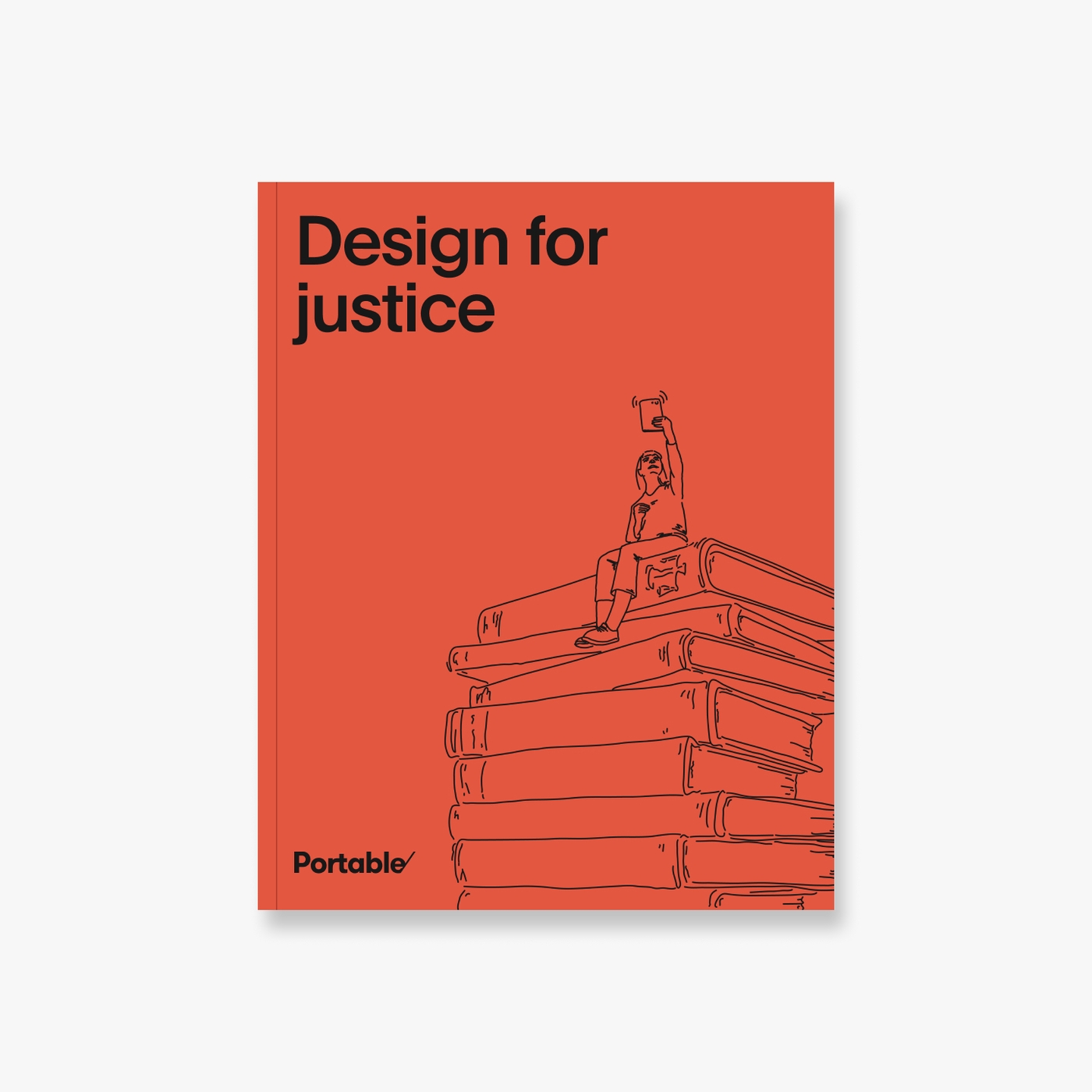Creating design solutions is all about trying to understand the problem. When I started working in legal design, it was difficult for me to clearly articulate the problem with how people experienced the justice system. The most recent edition of Design Issues, "The Rise of Legal Design", begins with a simple question that perfectly sums it up:
"How effective is a legal system that people cannot understand how to use?"
Although Design Issues is a US journal, this question also introduces a vast area of opportunity developing in the Australian legal sector. Now more than ever, the changes to how we work and live due to COVID19 are exposing existing barriers to accessing legal services and information. To revise how we approach delivering legal services to meet the current need, legal organisations need to look beyond the status quo approach to design and technology adoption. That’s why it’s the perfect time to focus on legal design, as it can allow us to revise our priorities and create more usable systems. Researchers, designers, and legal practitioners working together to create usable systems and increase innovation in the legal sector can help us to overcome these issues that COVID is currently putting forward.
This volume of Design Issues was co-edited by one of the pioneers of legal design, Margaret Hagan, who has been working for years to establish "Legal Design as a Thing". Developing legal design as a practice and way of improving legal services by incorporating design methodologies is mainly about focusing on lived experience, creatively exploring new solutions, and continually iterating and improving on your designs. As Margaret put in in her book: “Law by design is a lens that puts the focus of law on innovating, testing, and building systems that serve the agency of the people involved in them”. Our work at Portable has the same aim.
We believe good design can transform justice, and we've been on a journey over the last few years to use our expertise in research, design, and technology to create meaningful interactions with government bodies and legal services.
Legal design is about rethinking law as a service, not just an institution, which means bringing what we know about the potential for redesigning services and creating user-centred technology to improve people's lives and applying it to their legal journey. We see the value in solving problems on the frontline instead of waiting for reform. Our report, Design for Justice, shows that the key to creating accessible, useful, and empowering experience for citizens is designing solutions alongside the people who experience the problem.
I want to share some of the work we are doing with our partners and clients to bring awareness to these incredible efforts to provide innovative and human-centred solutions and highlight how we have collaborated with clients in the sector to bring human-centred design to legal services. We are proud to be the design and delivery partner of many government bodies and legal services across the country and of their commitment to investing in improved, user-centred initiatives in the justice sector.
Moving legal services online
Technology is only one tool in our legal design toolkit. Still, it’s an important one given all the potential for online platforms to improve the ability to access legal information and resolve problems. We’ve worked with the Legal Services Commission of South Australia, Legal Aid NSW, South Australian Attorney-General’s Department, Victorian Equal Opportunity and Human Rights Commission, and Victoria Legal Aid to improve user experiences by moving services online.
Legal Services Commission of South Australia
One of the biggest wins for us as a multidisciplinary team working in legal design has been developing amica, a digital solution for separating couples. We built amica alongside the project team at the Legal Services Commission (SA) on behalf of National Legal Aid. We were able to extensively co-design and test the platform with practitioners and people with lived experience. This online service will change the way people sort out their property divisions and parenting arrangements by helping them understand the legal process, reach an agreement between themselves, and create documents that will allow them to move on with their lives. Since our full launch on June 30, we’ve had over 1000 people sign up to amica. We also hope that having this product live, solving problems for people around Australia, will provide an impetus for moving more legal services online.
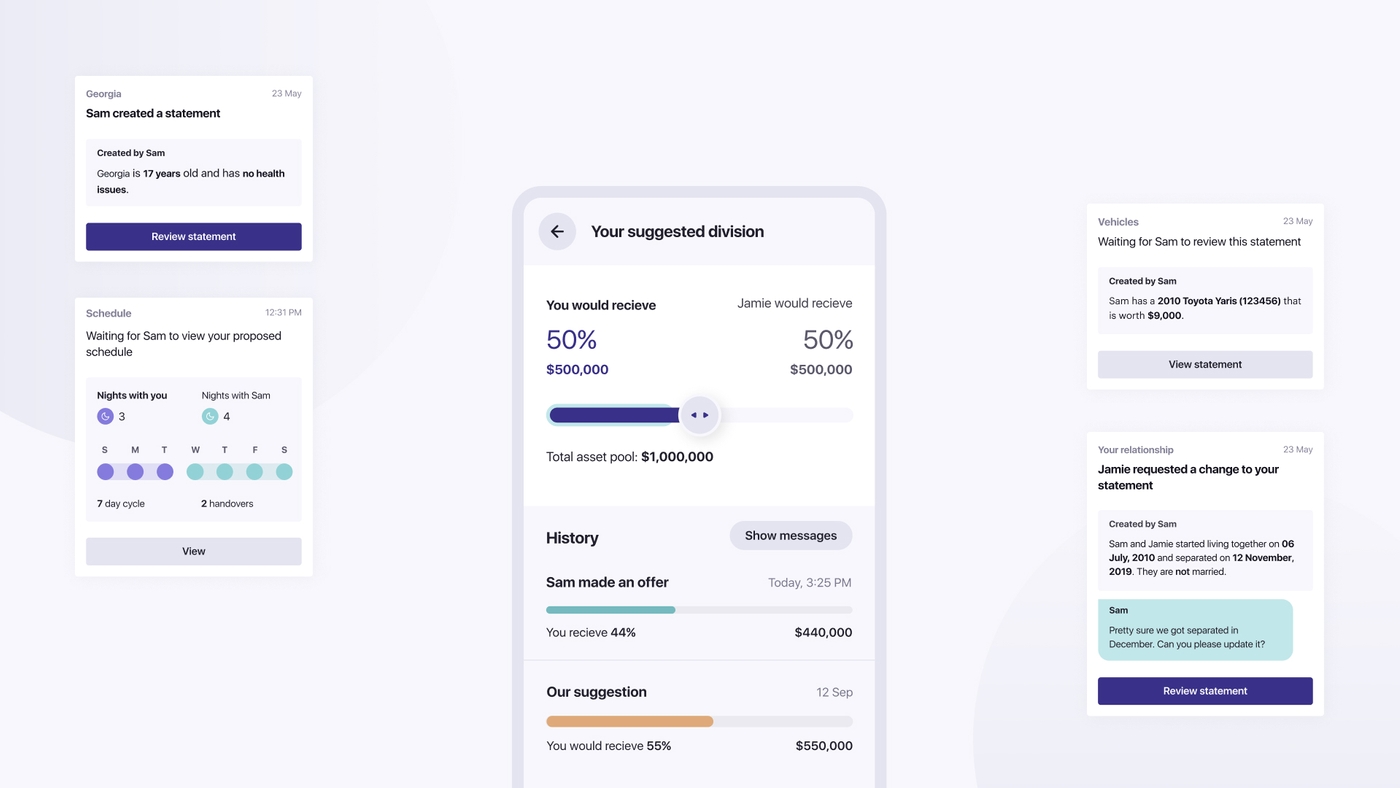
Legal Aid NSW
Legal Aid NSW is another excellent example of a legal aid service that has a proactive and innovative approach to solving problems for clients online. Through prioritising client-centred research, LANSW learned that one of the most pressing needs for their clients was being able to receive timely updates on their case and look for information that they needed themselves. This insight led to the development of the grants tracker, which sends SMS messages with links to an online portal with updates on the status of their grant of legal aid application and information on the process. The grants tracker has been incredibly helpful for a wide range of users who may wait weeks to hear back about their application for legal aid, all while worrying if they'll be able to get a lawyer before they're due in court. Since running our pilot, we’ve had 4150 legal aid clients track 4432 legal aid applications from August 2019 to July 2020. The benefits of designing and testing the tracker through the initial pilot and continuous improvements have also helped it remain accessible and inclusive. Clients from a range of different backgrounds have used the tracker. Over the period, 17% of clients using the tracker identified as Aboriginal or Torres Strait Islander, 10% were non-English speakers and nearly a quarter identity as persons living with disabilities.
LANSW also worked with us on developing the Traffic Guided Pathway, an innovative way to provide legal information for people with traffic issues in NSW. We co-designed the information pathways and content with people who had sought legal help to directly influence the tone of voice and types of information presented to people using the website. This online guided pathway is now live on the LawAccess website, and we hope it serves as a model for providing accessible self-help legal information.
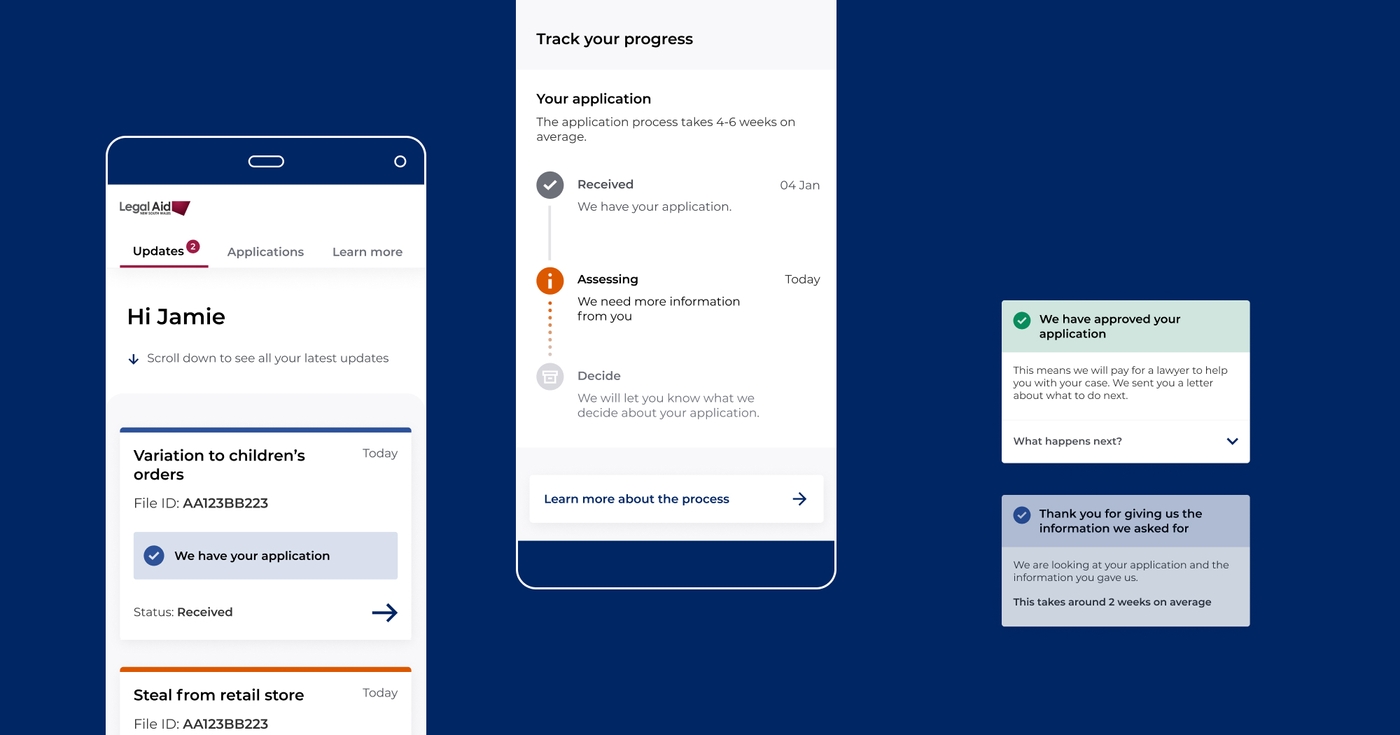
South Australian Attorney-General’s Department
An essential part of the digital transformation of legal services is understanding how changes affect the entire ecosystem. This is especially true for court services, who have to balance competing rights and viewpoints of stakeholders and citizens and ensure fair processes and transparent procedures. Portable recently helped to define a pathway to improving the way legal services are delivered online for South Australian courts by working with the South Australian Attorney-General’s Department to conduct a review of their Audio Visual Links (AVL) system, consulting with key stakeholders to provide a comprehensive report detailing recommendations for the future fo AVL for South Australia’s criminal justice system. The response to our delivery was overwhelmingly positive, with the South Australian Government subsequently committing $15million to overhaul audio-visual link technology within South Australia’s justice system.
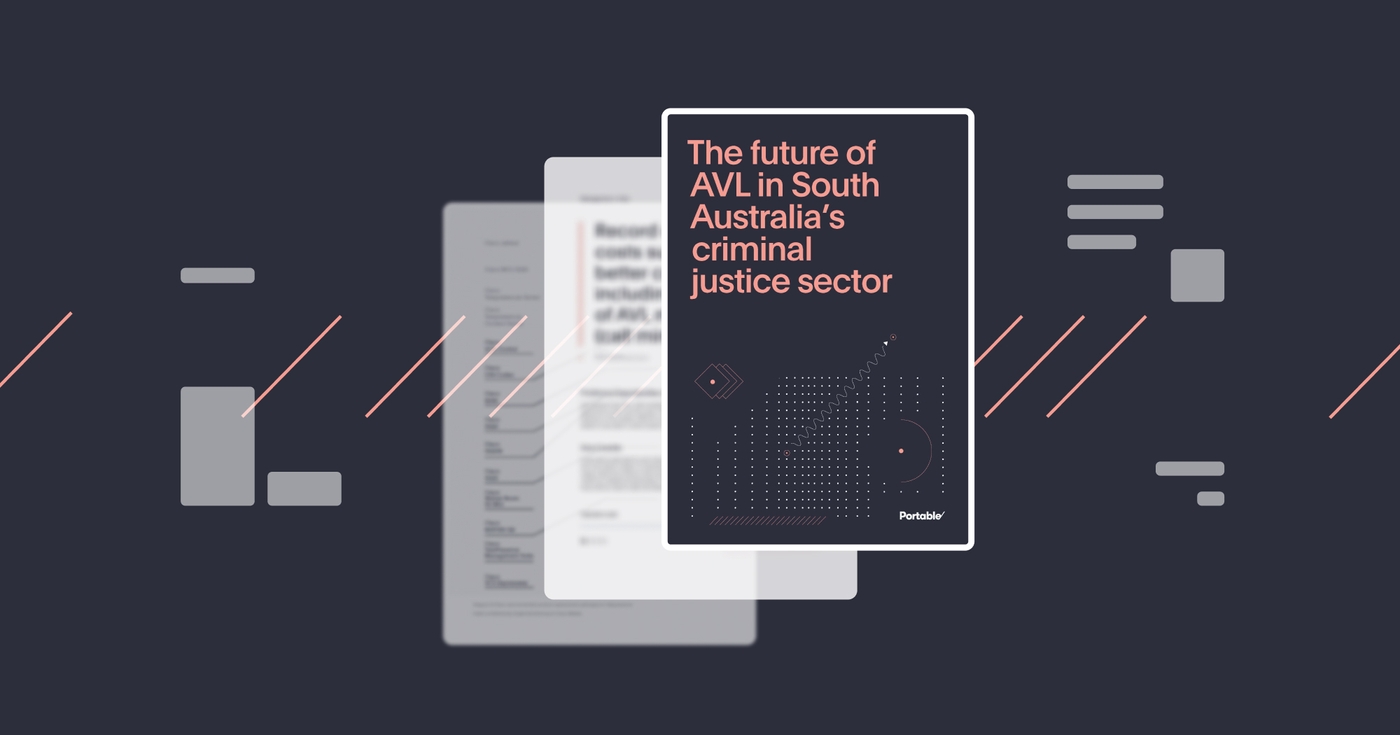
Victorian Equal Opportunity and Human Rights Commission
The Commission engaged Portable to re-envision its brand, the way they presented themselves on their website and to simplify the navigation pathways of website visitors accessing relevant information on human rights. This project was delivered as three distinct phases of define, design and deliver to ensure the new website meets the user needs and the Commission’s goals for its digital presence. Our developers built the site in Wordpress and the new site was launched in June 2020.
We are now working with VEOHRC and the Languages Other Than English Agency (LOTE) to translate content from core pages on human rights on the website into 10 other languages, including the translation of a form where website users can report a human rights abuse in their language. These translated pages will be launched in August 2020, providing a significant step forward for the site to ensure that people who speak languages other than English can assess critical information on their human rights and support in reporting human rights abuses.
Sharing our work with the community
Legal design isn’t just about working in a studio or lab to create design solutions. It’s also about sharing your work, collaborating with others, and passing on what you’ve learned. We have had the opportunity to share our approach to designing solutions centred around user needs by facilitating workshops with practitioners and students and presenting our work in conferences. The theme for the 2019 Victorian Legal Services Board and Commissioner Grants round prioritised funding programs that proposed using human-centred design and technology to deliver more innovative services. We worked with VLSB to create and deliver three workshops on the tools and methods we use to Define, Design, and Deliver projects in order to upskill applicants in design methodology, which resulted in multiple innovative programs being funded. In 2018, we presented our article, 'Making ODR Human', at the International Online Dispute Resolution Conference in Auckland, and in the following year shared our approach to using human-centred design for legal services at AltaCon, Australia’s first LegalTech conference. However, as a former law student, what’s been most exciting for me is that we’ve also been fortunate to work with law faculties around Australia who equip law students with design thinking and problem-solving skills to bring their innovative ideas to life.
Educating the next generation of legal designers
Last year, we were able to share our work with students in the Legal Technology and Innovation unit at the Swinburne University of Technology and talk through some of their ideas around creating more accessible legal disclaimers. We were also excited to be able to cap off the inaugural Law and Design Thinking course at QUT Law School with a weekend of workshops in Brisbane. In the workshops, students researched, ideated, and created a testable prototype that addressed access to justice issues. It was an invaluable experience for law students who learned that you could move beyond studying legal problems and into designing solutions, articulating them visually, and testing the tangible moments that matter.
The Law Apps class at Melbourne Law School is doing another year of exciting design work and teaching their students about how to create technology products that clients of community legal centres and other non-profit organisations can use to meet clients needs. We’ve been able to share our approach to how we use human-centred design to move legal service online to the Law Apps class for several years now, and last year we were also able to be involved in delivering the Legal Tech Design Pop-up course alongside Josef and Maddocks. One of our founders, Simon Goodrich, will be co-teaching the innovative Melbourne Law Masters subject, Design for Innovation, in this coming semester with Associate Professor, Gary Cazalet.
Exploring the legal journey
Legal design at Portable is about rethinking law as a service, not just an institution. To make this happen, we design solutions alongside the people who experience the problem, working with them to uncover their needs, pain points, and desires.
Victorian Civil and Administrative Tribunal
Working with people to learn more about their experiences accessing justice is especially crucial for communities who have been historically marginalised. We recently worked with VCAT to research the experiences of Koori people when engaging with VCAT services. It was vitally important to conduct this research from a place of cultural safety and sensitivity. To achieve this, we collaborated with VCAT's Koori Engagement Team at every step of the project as our research partners. This included co-design of the workshop agendas and interview scripts, having a Koori Engagement Team member guiding the conversation in every interview, and taking a highly collaborative approach to producing our research insights. Owing to this highly collaborative approach, those responsible for VCAT’s recent website relaunch were able to directly integrate our findings into the design of a new Koori support page on VCAT’s website. Our research formed the basis for several service-based improvements now being pursued at VCAT that will ultimately create more equitable access to justice for Koori people.
Department of Communities and Justice NSW
Researching and mapping alongside people experiencing the problem is an essential part of legal design. We can turn the information we collect into illustrated journey maps that can communicate how people experience legal issues. Organisations and teams can use these maps to deliver client-focused legal services. Our most recent example is from work we did in June with the Department of Communities and Justice NSW. They asked us to create journey maps to illustrate their research into how jurors, witnesses, defendants, victims and the friends and family of defendants or victims experience the justice system, including the touchpoints, desires, and processes involved. The maps will be used as an evidence bank for other stakeholders working with DCJ NSW to visually communicate the journey of people in the justice system in an accessible way.
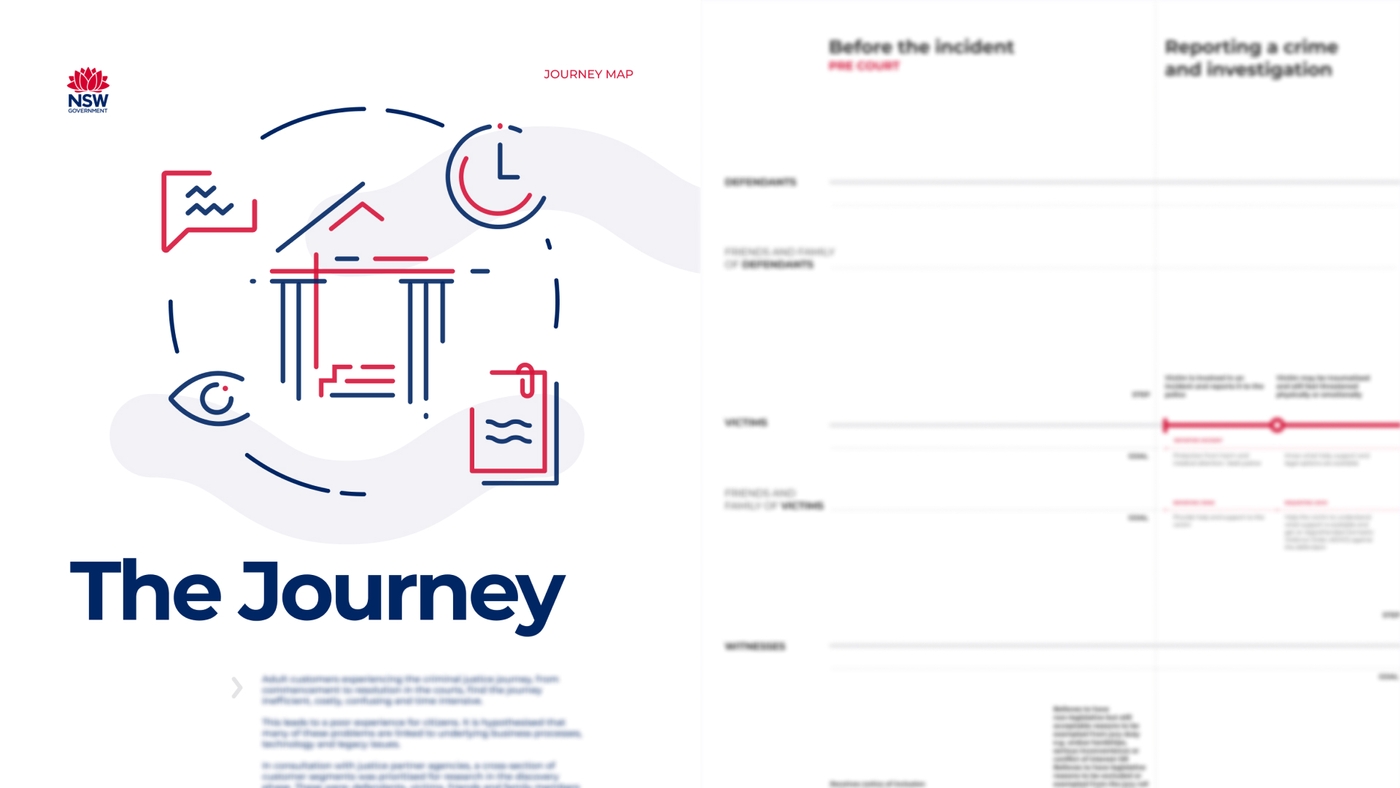
Improving the experience of attending court
YourCase
YourCase is a digital tool that provides a better experience for family violence victim-survivors attending court. Several years ago, we began proactively exploring how we might improve the experience of victim-survivors in the lead up to their day at court and beyond. In recognition of this work, we obtained funding support from the Public Sector Innovation Fund to continue our work on the project. After several years of research and active collaboration with a broad range of sector stakeholders, including co-designing with Nicole Lee, an anti-violence campaigner with lived experience of family violence and the court process, we designed and developed YourCase, which we were proud to launch earlier this year for a pilot. You can hear more from Nicole about her involvement in this project in this video interview.
The Sir Zelman Cowen Centre at Victoria Universit recently evaluated this pilot. The evaluation report found that all YourCase objectives have been achieved, or are on track to being achieved and that YourCase’s design and the results of the pilot phase provide useful learnings for developing similar tools to support access to justice for vulnerable users in other jurisdictions.
YourCase was recently awarded Gold at the 2020 GOV Design Awards, and it has now been awarded Gold at the 2020 Melbourne Design Awards in the category of ‘Service - Community' by DrivenxDesign. We couldn’t be more proud of the work that our team, the project partners, and Nicole put into making YourCase a reality.
CourtSight
The Shepparton Law Courts was looking for an innovative way to improve the wayfinding, check-in and ticketing system for citizens. We partnered with them in 2018 to design and implement a user-centric way to help people navigate their day of court experience, providing transparency on how their matter is progressing whilst at court. To discover users’ needs, we conducted interviews, allowing us to customise the ways visitors and staff experience the various parts of the facility. This involved matching up visitor needs and court needs for each different jurisdiction, as each has different workflows and requirements.
The wayfinding solution, which is based on Courtsight technology, features around 40 screens and public displays across the courts, and tablets for staff to manage the complex workflows for people navigating the courts. This technology reduces inefficiencies in the court's processes. Court staff, for example, no longer call parties only to find that they haven’t arrived. Digitising the check-in process and ticketing system allows staff to know if everyone’s present so matters to be heard can be prioritised.
What’s next?
- We’re excited for the opportunity to explore people’s experience as jurors in our upcoming project with Juries Victoria. We will be helping Juries Victoria progress toward their vision of an integrated, digital-first and user-centric experience for their organisation.
- We are conducting user research for the Commonwealth Ombudsman to create a future state blueprint for their service and inform their channel management strategy.
- We are continuing to develop our work in tracking legal aid applications, creating guided pathways, and developing online dispute resolution offerings across different matters and jurisdictions.
Interested in working with Portable on a legal design project?
We are always open to working with new partners who share our mission to redesign services and initiatives in the justice sector with a focus on improving the experience of those who engage with the system.
Reach out to hello@portable.com.au if you’d like to discuss the possibility of collaborating with us further.
Download our report on legal design
